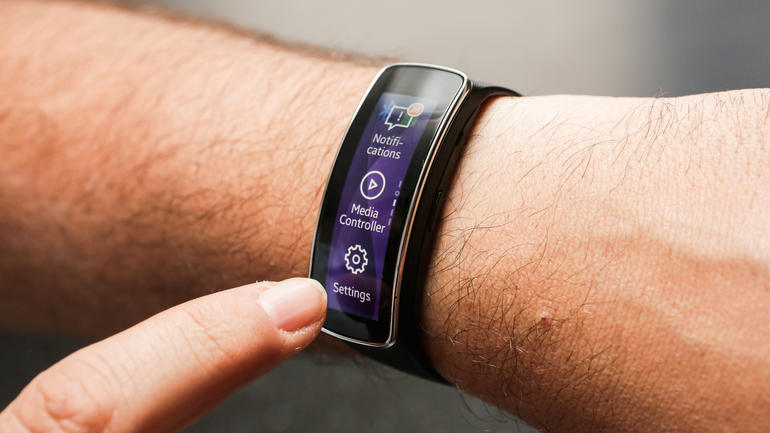
If there are any hot technology items that could become popular over this year's Christmas gift-giving season, it might be fought between smartwatches and fitness wearables.
Thanks to new advances in technology, the fields of smartwatches and wearables could be competing for space on the wrists of consumers. Although the smart device with the biggest buzz, Apple Watch, won't be released for sale until sometime after the holiday season, Mark Sullivan of VentureBeat thinks that smartwatches will be the dominant player in the wearables market.
"There is a better way, and it lives on your wrist," Sullivan wrote. "The smartwatches we've seen so far have been awkward efforts. But early next year, the first truly worthy entrant in the class will be released into the wild."
Sullivan added that smartwatches will "begin stealing features and functions from the smartphone." He argues that mobile payments, video chat, child monitoring, public transportation, and identification purposes and features are the "killer uses of the smartwatch" that will spark the change and drive consumer interest to them.

Besides Apple, other technology companies are already in the smartwatch game, including LG with its G Watch line, Motorola with Moto 360, Samsung with its Gear line, and Pebble with its latest smartwatch rendition known as Pebble Steel. Most smartwatch brands, excluding Apple, work only with Android smartphones, while Pebble is compatible with both Android and iOS devices.
However, Natasha Lomas of Techcrunch thinks that fitness wearables such as FitBit will hold their own against the smartwatch industry. She cites a report from analysts at Gartner that sales of the wearables may take a short-term dip, but those devices could bounce back in the market come 2016.
"In a global forecast on fitness wearables, the analyst projects shipments will reach 68.1 million units in 2015, down from 70 million in 2014, as a larger proportion of buyers opt for smartwatches instead," Lomas wrote. "But by 2016 it sees shipments bouncing back - to total 91.3 million units."
Lomas notes, however, that Gartner divided the fitness wearables category into five segments: smart wristbands, sports watches, other fitness monitors, heart rate monitor chest straps, and smart garments. Although Gartner admits that there may be some functionality overlap between smart wristbands and smartwatches, the fitness devices might have a future use that does not involve selling them at the shops.
"These companies will serve as a growing distribution channel for device manufacturers," Gartner stated. "The new channels also result from fitness monitors being integrated into employee badges or identification bracelets for access control. Business-to-consumer companies will have rewards or gamification linked to the use of wearables as a way of keeping customers engaged with their brands."
According to Gartner, the market for the smart fitness wristbands could be targeted at gyms, wellness providers, weight loss clinics, insurance providers and employers.
However, an article in The Guardian reports that the biggest hurdle for both smartwatches and other wearables is that their owners could lose interest in them after a while, according to Pebble chief executive Eric Micigovsky.
"At the beginning [of getting a Pebble] people tend to use it just for notifications and the changeable watchfaces," Micigovsky said. "But then they explore our app store and add other features, like controlling lights and thermostats - there's even a Guardian app."
Micigovsky notes that people still keep using Pebble watches, adding that his company is "doing very well on those terms."

Despite the buzz surrounding the wearables market, The Guardian noted that smartwatches only make up 11 percent of it, while health and fitness trackers take up 39 percent of the space; other devices, such as "wrist sport computers" and "action cameras" like GoPro cameras make up 26 and 24 percent of this market respectively.
In the battle to occupy customers' wrists, traditional watchmakers are taking a wait-and-see approach before developing their own smartwatches. In a Bloomberg article written by Corinne Gretler and Jan Schwalbe back in June, Nick Hayek, the CEO of Swatch Group AG, thinks that if the market develops for smartwatches and wearables, his company can jump in and sell components to others.
"I believe in the smartwatch, but not as a replacement for watches," said Hayek. "If a market for smart objects on the wrist really develops, then we'll be there."
In response to the smartwatch market, Swatch developed an automatic watch known as Sistem51, which is made of 51 parts, rotates around a single screw, and requires no maintenance thanks to a hermetically sealed case. According to John Biggs of TechCrunch, Swatch has hit the "Platonic ideal" of a timepiece: it lasts a long time without maintenance and is as simple as possible while doing exactly what it is supposed to do.
"It's also important because where the watch industry goes, so goes high-tech," Biggs wrote. "For all the talk of the little Swiss watchmaker at his bench, the reality of Swatch is far more technological. These are mass-produced items that require a great deal of quality control to get right. Each gear and gimbal has to work perfectly in order to function and, like a PCB inside a new phone, the parts have to work with the whole to maintain accuracy and control."
Whatever device ends up on the wrists of consumers this Christmas, it's safe to say that the wearables market will continue to be a competitive one in the future.
















